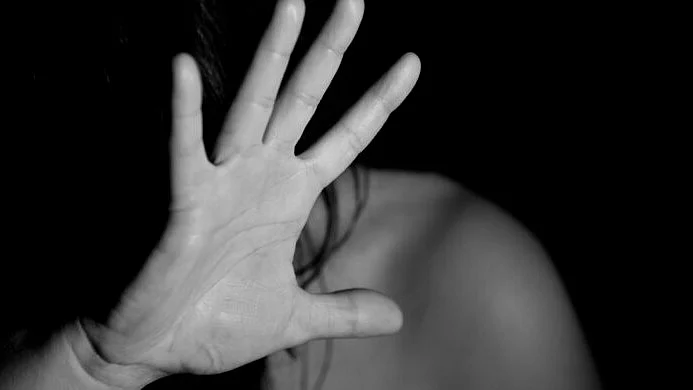18 dowry deaths a day in India, Uttar Pradesh tops NCRB list of worst offenders
Uttar Pradesh, Bihar and Madhya Pradesh together accounted for nearly half of India’s dowry deaths between 2020 and 2022

The recent death-by-burning of a woman in Greater Noida, allegedly set on fire by her husband and in-laws, who wanted more money as dowry, has put the spotlight on crimes against women in Uttar Pradesh.
According to the last available report from the National Crime Records Bureau (NCRB) — Crime in India 2022 — as many as 19,882 dowry deaths were reported across India between 2020 and 2022... and that was just the tip of the iceberg, as not every such case is officially reported as a ‘dowry death’.
Yet, even going by official records, Government data further show that on an average 18 dowry deaths are reported across the country on a daily basis.
One of those was the recent case of Greater Noida resident Nikki Bhati, 26, saw her set ablaze allegedly by her husband, Vipin Bhati, on 24 August.
Bhati, who died on the way to hospital (though it is unclear why she was being sent to Delhi rather than being treated locally) is but one representative from the state with the worst statistics nationwide.
NCRB figures show that Uttar Pradesh consistently tops the list of dowry deaths in the country — 2,274 cases reported in 2020; another 2,222 in 2021; then 2,218 in 2022. Hardly a downward trend, even.
This translates to 33 per cent — or a staggering one in every three — of all dowry deaths in the country taking place in Yogi Adityanath’s realm.
The persistence of such high figures year after year underscores the gravity of the social issue in the state, in addition to the frightening crime rate, and highlights the failure of preventive measures — if any — implemented by the state government.
Nationwide ‘decline’ a scant statistic
Nationally, dowry deaths have shown only a marginal decline over the last few years. The NCRB data recorded 6,843 deaths in 2020, falling to 6,589 in 2021, and then 6,450 in 2022.
While the overall numbers may suggest slight progress, the fact that several thousand women continue to lose their lives every year to a problem campaigned against since 1979 (the Tarvinder Kaur case) — and seeing civic society’s outrage since the 1914 Snehalatha Mukhopadhyay case in colonial India, more than a century ago — remains shocking, and is clear evidence that it is still a widespread and deeply entrenched practice for all the lip service .
And Uttar Pradesh is not alone in scripting this centuries-long horror story.
Bihar has consistently ranked second in dowry deaths, reporting 1,046 deaths in 2020, another 1,024 in 2021 and going up to 1,057 in 2022!
Madhya Pradesh ranks third among the worst offenders, with 608 deaths in 2020, another 550 in 2021 and 518 in 2022.
Together, these three states — Uttar Pradesh, Bihar and Madhya Pradesh— account for nearly half of the country’s total dowry deaths during this three-year period.
Other states with high incidence
In 2020, West Bengal recorded 522 deaths, Rajasthan reported 479 and Odisha reported 320. Jharkhand accounted for 275 deaths, while Haryana saw 251 deaths. And Delhi — the national capital and a tiny territory comparatively — alone reported 110 dowry deaths in 2020.
The southern states, although reporting comparatively lower figures, still must own a significant number of cases. In 2022, Karnataka recorded 167 deaths, Telangana 137 deaths, Tamil Nadu 29 deaths and Kerala 11 deaths.
At the other end of the spectrum, several smaller states and union territories have reported no dowry deaths in certain years. In this gratifying list in 2020 were featured Arunachal Pradesh, Goa, Mizoram, Sikkim, the Andaman and Nicobar Islands, Ladakh and Lakshadweep — zero cases in each of them.
This sharp contrast in the geographic distribution of dowry deaths surely points to regional cultural differences and varying levels of social acceptance of dowry practices.
A persistent social challenge
Dowry has been legally prohibited in India for over six decades under the Dowry Prohibition Act of 1961.
Additionally, dowry deaths were specifically covered under Section 304B of the Indian Penal Code (bow Section 80 of the Bharatiya Nyaya Sanhita), which prescribed stringent punishment.
However, the NCRB’s figures clearly show that laws and proscriptions have not translated into social eradication of the practice.
The persistence of high numbers in states like Uttar Pradesh and Bihar indicate that legal safeguards alone are not enough. Social acceptance of both dowry and misogyny in regional social landscapes, coupled with slow judicial processes and limited deterrence, continue to fuel the problem.
The NCRB data suggests that tackling dowry deaths requires a two-pronged approach — not just strengthening the enforcement of existing laws but driving and sustaining social change.
Awareness campaigns, education and economic empowerment of women need to be intensified, especially in high-incidence states.
At the same time, faster trials and stricter penalties for offenders may, we can only hope, create stronger deterrence.
Follow us on: Facebook, Twitter, Google News, Instagram
Join our official telegram channel (@nationalherald) and stay updated with the latest headlines
